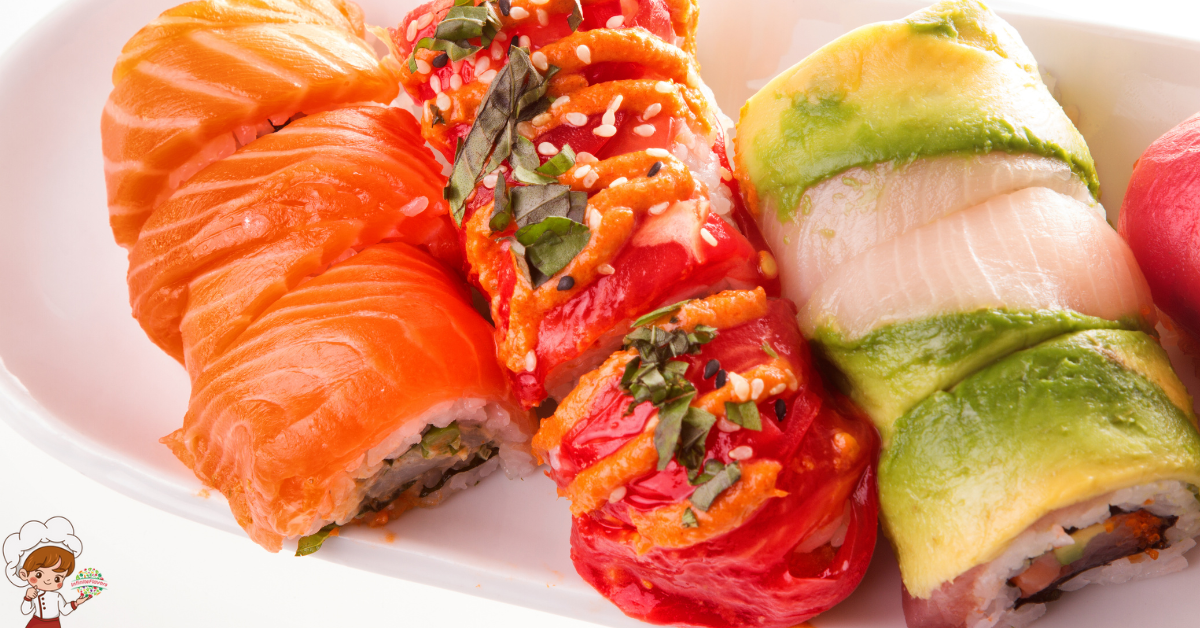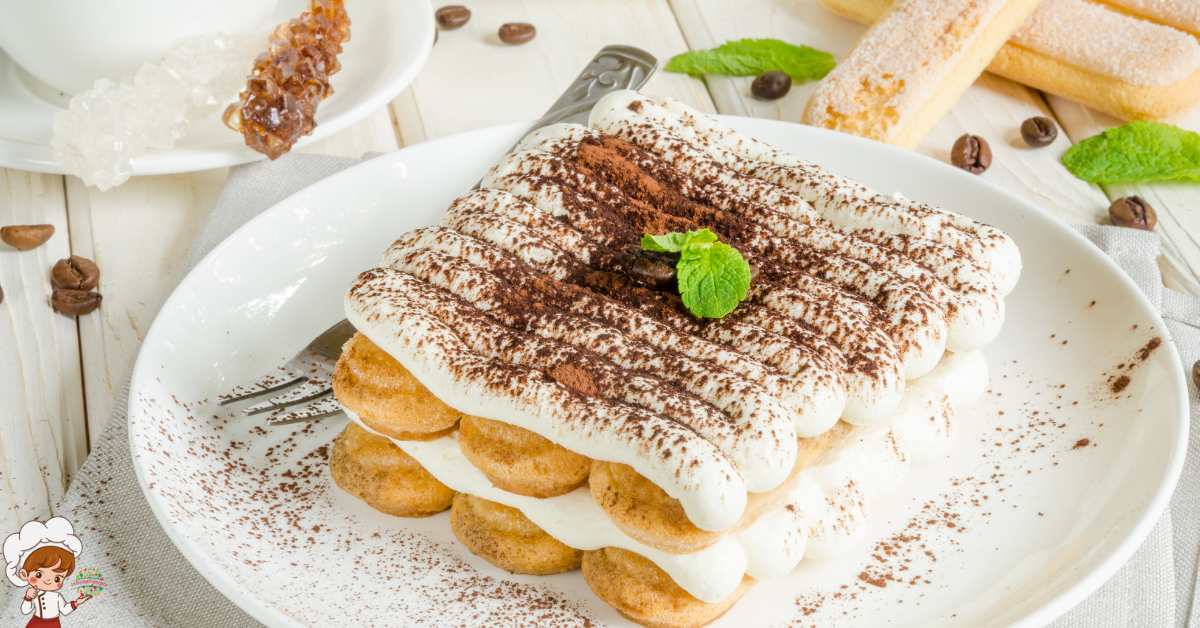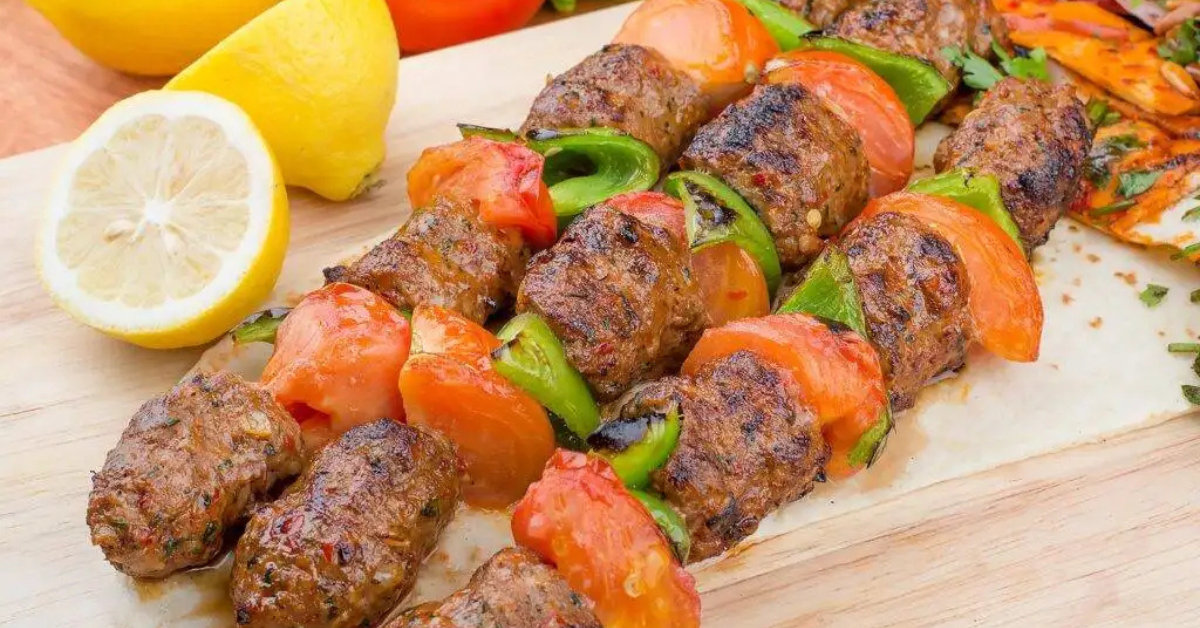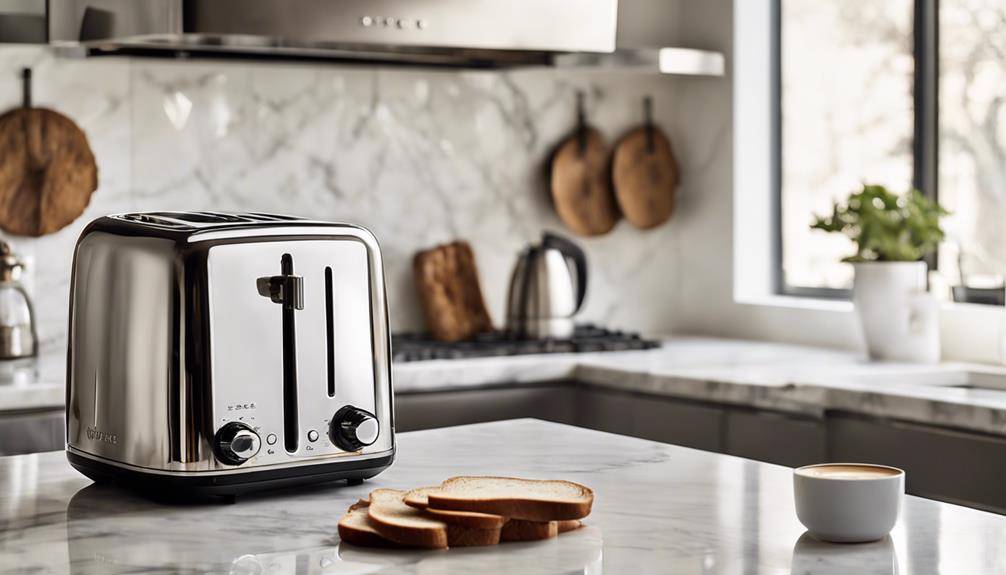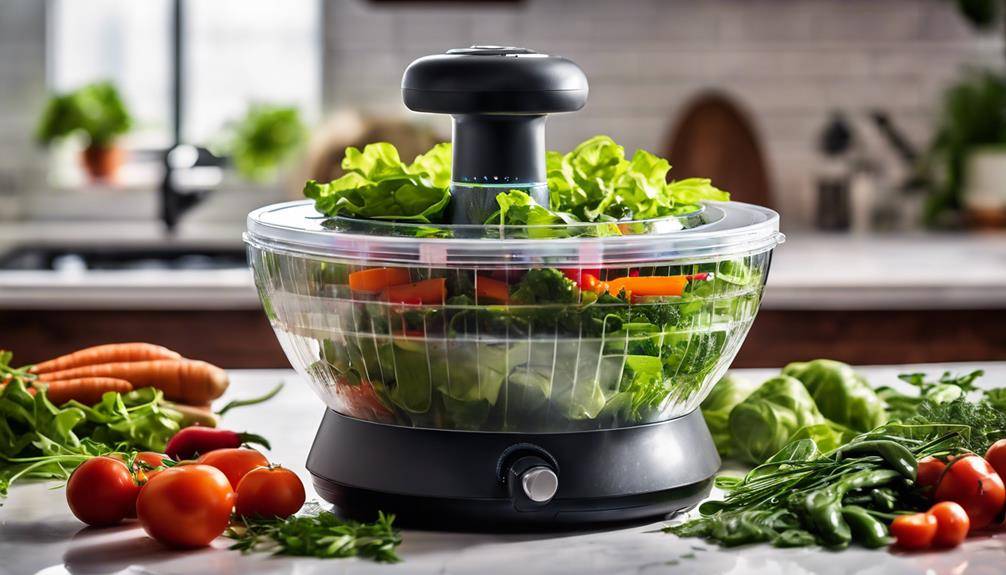The Best Healthy Brazilian Cooking Tips

The Best Healthy Brazilian Cooking Tips; Are you eager to embrace a healthier lifestyle while still indulging in the flavors of Brazilian cuisine? Look no further! In this discussion, we will uncover a plethora of practical and palate-pleasing tips to whip up delectable Brazilian dishes that are not only scrumptious but also nourishing. From incorporating fresh and flavorful ingredients to lightening up traditional favorites, we will explore the secrets to creating healthy Brazilian meals that will leave you satisfied and wanting more. So, get ready to tantalize your taste buds and embark on a culinary journey that celebrates both health and flavor.
Introduction to Healthy Brazilian Cooking
If you’re looking to explore the world of Brazilian cuisine while maintaining a healthy lifestyle, this introduction to healthy Brazilian cooking is just what you need. Brazilian cuisine is known for its vibrant flavors and diverse ingredients, and with a few simple tweaks, you can enjoy these delicious dishes without compromising your health.
One of the key principles of healthy Brazilian cooking is incorporating healthy fats into your meals. Instead of using unhealthy oils or butter, opt for healthier alternatives such as olive oil or avocado oil. These fats are rich in monounsaturated fats, which can help lower bad cholesterol levels and reduce the risk of heart disease. Additionally, they add a delicious flavor to your dishes.
Another important aspect of healthy Brazilian cooking is cooking with whole grains. Whole grains are packed with fiber, vitamins, and minerals, making them a nutritious choice for your meals. Instead of using refined grains like white rice or white flour, try substituting them with whole grains like brown rice, quinoa, or whole wheat flour. These whole grains have a lower glycemic index and can help regulate blood sugar levels, making them a great choice for those with diabetes or those looking to maintain a healthy weight.
Incorporating healthy fats and cooking with whole grains are just two of the many ways you can make Brazilian cuisine healthier. By making these simple changes, you can enjoy the rich flavors and cultural experience of Brazilian cooking while still prioritizing your health. So go ahead, explore the world of Brazilian cuisine, and embrace a healthier way of cooking.
Incorporating Fresh Ingredients
To elevate the flavors of your Brazilian dishes, it is essential to incorporate fresh ingredients. Start by selecting seasonal produce, as they are at their peak in flavor and nutritional value. Experiment with flavorful herb combinations to add depth and complexity to your dishes. Additionally, using local ingredients not only supports your community but also ensures that you are cooking with the freshest and most sustainable options available.
Seasonal Produce Selection
To ensure the freshest and most flavorful Brazilian dishes, prioritize seasonal produce for an authentic and delicious culinary experience. By choosing fruits and vegetables that are in season, you not only benefit from their peak flavor and nutritional value, but you also support sustainable farming practices. Here are three reasons why incorporating seasonal produce is beneficial:
- Enhanced Flavor: Seasonal produce is harvested at its peak ripeness, resulting in superior flavor. Whether it’s juicy tomatoes in the summer or sweet citrus fruits in the winter, using seasonal ingredients will elevate the taste of your dishes.
- Nutritional Value: Seasonal produce is packed with essential vitamins, minerals, and antioxidants. As fruits and vegetables are allowed to fully mature before harvesting, they retain more nutrients, ensuring you get the maximum health benefits.
- Environmental Sustainability: Seasonal produce relies on natural growing conditions, reducing the need for artificial interventions like pesticides and excessive irrigation. By choosing seasonal ingredients, you contribute to a more sustainable and eco-friendly food system.
Incorporating seasonal produce into your Brazilian cooking not only enhances the taste and nutritional value of your dishes but also supports sustainable farming practices.
Flavorful Herb Combinations
Incorporating fresh herbs into your Brazilian cooking is a simple and effective way to add incredible flavor to your dishes. By exploring new flavors and experimenting with spices, you can elevate your meals to a whole new level. Brazilian cuisine is known for its vibrant and bold flavors, and herbs play a crucial role in achieving this.
Some popular herb combinations used in Brazilian cooking include cilantro and mint, parsley and garlic, and oregano and thyme. These combinations not only enhance the taste of your dishes but also add a refreshing and aromatic element. When using fresh herbs, remember to chop them finely to release their full flavor. So go ahead, get creative with your herb combinations and take your Brazilian cooking to new heights of deliciousness.
Using Local Ingredients
As you continue to explore the vibrant and bold flavors of Brazilian cuisine, the next step is to incorporate fresh local ingredients into your cooking. Not only does local sourcing support the community and economy, but it also ensures that you are using the freshest and most flavorful ingredients available. Here are three tips for incorporating local ingredients into your Brazilian cooking:
- Visit farmers’ markets: Farmers’ markets are a great place to find locally sourced fruits, vegetables, and herbs. Not only can you support local farmers, but you can also discover new and unique ingredients to incorporate into your dishes.
- Grow your own herbs: Growing your own herbs is a sustainable and cost-effective way to ensure a constant supply of fresh flavors for your Brazilian dishes. Whether you have a backyard or a small balcony, herbs like cilantro, parsley, and mint can easily be grown in pots or containers.
- Learn about seasonal produce: Understanding what fruits and vegetables are in season will not only guarantee the best flavor but also help you support sustainable farming practices. By cooking with seasonal ingredients, you can create dishes that are both delicious and environmentally friendly.
The Power of Plant-Based Proteins
Did you know that incorporating plant-based proteins into your diet can have numerous benefits for your health? Plant proteins are not only rich in essential nutrients, but they are also low in saturated fats and cholesterol. Some excellent sources of plant proteins include legumes, tofu, tempeh, and quinoa. By incorporating these plant-based proteins into your meals, you can enjoy a variety of delicious and nutritious dishes while reaping the health benefits they provide.
Benefits of Plant Proteins
To maximize the nutritional benefits of your meals, consider incorporating the power of plant-based proteins into your Brazilian cooking. Plant proteins offer several advantages over animal proteins, making them a great addition to your diet. Here are three key benefits of plant proteins:
- Heart health: Plant proteins, such as beans, lentils, and quinoa, are naturally low in saturated fats and cholesterol. They can help lower your risk of heart disease and improve overall cardiovascular health.
- Weight management: Plant proteins are high in fiber and can help you feel fuller for longer. By including more plant proteins in your meals, you can reduce calorie intake and maintain a healthy weight.
- Nutrient-rich: Plant proteins are packed with essential nutrients such as vitamins, minerals, and antioxidants. They offer a wide range of health benefits, including improved digestion, increased energy levels, and enhanced immune function.
Incorporating plant protein recipes into your Brazilian cooking can be a delicious and nutritious way to enjoy the benefits of plant-based proteins.
Plant Protein Sources
Incorporating plant protein sources into your Brazilian cooking can provide a powerful boost of nutrition and flavor. Plant proteins offer a range of benefits, including being lower in saturated fat and cholesterol compared to animal proteins. They are also rich in fiber, which supports digestive health and helps you feel satisfied after meals.
When it comes to alternative protein sources, there are plenty of options to choose from. Legumes like black beans, chickpeas, and lentils are excellent sources of plant-based protein. Quinoa and tofu are also great choices. Additionally, nuts and seeds, such as almonds, chia seeds, and pumpkin seeds, can be added to dishes to increase their protein content. By incorporating these plant protein sources into your Brazilian cooking, you can create delicious and nutritious meals that support a healthy lifestyle.
Incorporating Plant Proteins
By adding these plant protein sources to your Brazilian cooking, you can enhance both the nutritional value and the taste of your meals. Plant-based proteins offer numerous benefits that make them an excellent choice for a healthy diet. Here are three reasons why you should incorporate plant proteins into your Brazilian recipes:
- Health benefits: Plant-based proteins are low in saturated fat and cholesterol, making them heart-healthy options. They also contain essential nutrients like fiber, vitamins, and minerals that contribute to overall well-being.
- Environmental sustainability: Plant protein sources have a lower carbon footprint compared to animal-based proteins. By choosing plant proteins, you can reduce your environmental impact and contribute to a more sustainable food system.
- Versatility in recipes: Plant proteins, such as beans, lentils, and tofu, can be used in a variety of Brazilian dishes. From feijoada to moqueca, there are countless plant protein recipes that can add flavor and texture to your meals.
Incorporating plant proteins into your Brazilian cooking not only benefits your health but also promotes a more sustainable and delicious culinary experience.
Exploring Traditional Brazilian Spices
Traditional Brazilian spices add unique flavors to dishes, enhancing the culinary experience with their distinct aromas and tastes. Exploring these traditional spice blends can elevate your cooking to new heights and introduce you to a whole new world of flavors.
One of the most popular traditional spice blends in Brazil is called tempero completo. This versatile blend typically consists of garlic, onion, salt, black pepper, and sometimes additional herbs and spices like parsley and paprika. It adds depth and complexity to a wide range of dishes, from stews and soups to grilled meats and vegetables.
Another beloved spice blend in Brazilian cuisine is called baharat. This blend originated in the northeastern region of Brazil and is known for its warm and aromatic flavors. It typically includes a mix of cinnamon, cloves, nutmeg, ginger, and black pepper. Baharat is often used in dishes such as feijoada, a traditional Brazilian black bean stew, to add a touch of warmth and spice.
If you’re looking to add a smoky flavor to your dishes, try using pimenta calabresa. This dried and crushed chili pepper is commonly used in Brazilian cuisine to add heat and smokiness to dishes like rice, beans, and meats.
Incorporating these traditional Brazilian spices into your cooking will not only enhance the flavors of your dishes but also introduce you to new and exciting tastes. So go ahead and explore the world of Brazilian spices, and let your taste buds embark on a culinary adventure.
Lightening Up Traditional Brazilian Dishes
To create healthier versions of traditional Brazilian dishes, you can explore alternative cooking methods and ingredient substitutions. By making small changes to the way you prepare and cook these dishes, you can enjoy lighter versions that are just as delicious. Here are three tips to help you lighten up your favorite Brazilian recipes:
- Substitute high-fat ingredients: Many traditional Brazilian dishes use ingredients like coconut milk, butter, and heavy cream, which can add a lot of calories and fat. Instead, try using lighter alternatives like low-fat coconut milk, olive oil, or Greek yogurt. These substitutions can significantly reduce the fat content of your dish without compromising flavor.
- Choose leaner proteins: Brazilian cuisine often incorporates meats like beef, pork, and sausage, which can be high in saturated fat. Opt for leaner cuts of meat or choose poultry and fish instead. For example, swap out fatty cuts of beef for leaner options like sirloin or tenderloin. You can also try using beans or tofu as a plant-based protein alternative.
- Incorporate more vegetables: Adding more vegetables to your dishes is an easy way to make them healthier. Not only do vegetables provide essential nutrients, but they also add fiber and volume to your meals, helping you feel more satisfied. Try adding colorful vegetables like bell peppers, tomatoes, and zucchini to your stews, stir-fries, and rice dishes.
Healthy Grilling Techniques
Grilling can be a healthy cooking method that adds delicious flavor to your Brazilian dishes. By using healthy grilling techniques, you can enjoy the benefits of grilled food without compromising your health. One of the main advantages of grilling is that it allows excess fat to drip away from the food, reducing calorie content. To further enhance the healthiness of your grilled dishes, consider using alternative cooking methods.
When grilling, opt for lean cuts of meat, such as chicken breast or fish, to minimize saturated fat intake. Marinating your meat or poultry beforehand can add flavor and moisture, reducing the need for added fats or sauces. Choose marinades made with healthy ingredients like olive oil, lemon juice, and herbs, which can also help reduce the formation of harmful compounds that can occur during grilling.
To prevent charring and the formation of potentially carcinogenic substances, it is essential to practice healthy grilling techniques. Start by preheating the grill to a medium temperature to ensure even cooking and reduce the risk of flare-ups. Keep a close eye on the food while grilling, flipping it regularly to avoid burning. Consider using a grill basket or foil to prevent small pieces of food from falling through the grates.
In addition to traditional grilling, there are alternative cooking methods that can mimic the flavors of grilling while being even healthier. Try using a grill pan or an indoor electric grill to cook your Brazilian dishes. These methods allow you to control the cooking temperature and reduce the amount of smoke produced. Alternatively, you can also broil or roast your food to achieve similar flavors without the need for an outdoor grill.
Nutritious Brazilian Salad Recipes
Looking for nutritious options to complement your Brazilian dishes? Adding a healthy salad to your meal is a great way to incorporate fresh vegetables and vibrant flavors into your diet. Brazilian cuisine offers a variety of delicious salad recipes that are not only nutritious but also bursting with unique flavors. Here are three must-try Brazilian salad recipes:
- Feijoada Salad: Feijoada is a traditional Brazilian black bean stew. To create a lighter version, toss cooked black beans with diced tomatoes, red onions, and chopped cilantro. For the dressing, whisk together olive oil, lime juice, minced garlic, and a touch of cumin. This zesty dressing complements the earthy flavors of the beans and adds a refreshing twist to this classic dish.
- Tropical Fruit Salad: Brazil is known for its abundance of exotic fruits. To make a refreshing tropical salad, combine diced mangoes, papayas, and pineapples in a bowl. Sprinkle with fresh mint leaves for a burst of freshness. For a tangy dressing, mix together lime juice, honey, and a pinch of chili powder. This vibrant salad is perfect for hot summer days and adds a pop of color to your table.
- Cabbage and Carrot Salad: This crunchy salad is a staple in Brazilian cuisine. Thinly slice green cabbage and grate carrots, then toss them together in a bowl. For the dressing, whisk together olive oil, apple cider vinegar, Dijon mustard, and a hint of honey. This light and tangy dressing perfectly complements the crisp vegetables, creating a simple yet satisfying salad.
These Brazilian salad recipes offer a delightful combination of flavors and textures. Experiment with different combinations of vegetables, fruits, and dressings to create your own unique salad. Whether you’re looking for a light side dish or a refreshing main course, these nutritious Brazilian salads are sure to satisfy your taste buds.
Embracing the Benefits of Tropical Fruits
When it comes to embracing the benefits of tropical fruits, you’ll be pleased to discover their high nutritional value. Tropical fruits are packed with essential vitamins, minerals, and antioxidants that can boost your overall health. From the vibrant colors of papaya and mango to the refreshing taste of pineapple and coconut, there is a wide variety of tropical fruits to choose from. So why not incorporate these delicious fruits into your meals for a nutritious and flavorful twist?
Nutritional Value of Fruits
Tropical fruits offer a wide array of nutritional benefits that can greatly enhance your overall well-being. Incorporating these fruits into your diet can be easy and delicious. Here are three ways you can embrace the benefits of tropical fruits:
- Nutritional benefits of fruit juices: Freshly squeezed fruit juices are a great way to enjoy the nutrients found in tropical fruits. They are packed with vitamins, minerals, and antioxidants that can boost your immune system and promote healthy digestion.
- Incorporating fruits into smoothies: Smoothies are a popular and convenient way to incorporate tropical fruits into your diet. Blend fruits like mango, pineapple, and papaya with yogurt or coconut water for a refreshing and nutritious treat. These fruits are rich in fiber, which can aid in weight management and improve heart health.
- Snacking on tropical fruits: Instead of reaching for unhealthy snacks, choose tropical fruits like bananas, kiwis, and guavas. These fruits are low in calories, but high in essential nutrients such as potassium, vitamin C, and fiber. They make for a satisfying and nutritious snack option.
Variety of Tropical Fruits
To fully embrace the benefits of tropical fruits, it’s important to explore the wide variety of options available that can enhance your overall well-being. Tropical fruits are not only delicious but also packed with numerous nutritional benefits. They are rich in vitamins, minerals, and antioxidants that can support a healthy immune system and improve digestion.
Adding a variety of tropical fruits to your diet can also help reduce the risk of chronic diseases such as heart disease and certain types of cancers. To incorporate these fruits into your meals, try tropical fruit recipes like mango salsa, pineapple smoothies, or papaya salads. These recipes not only provide a burst of flavor but also contribute to your daily nutrient intake. So go ahead, explore the tropical fruit aisle and discover the amazing health benefits they have to offer.
Incorporating Fruits Into Meals
Incorporate the benefits of tropical fruits into your meals by exploring delicious and nutritious recipes that feature these flavorful additions. Here are three ideas to help you embrace the benefits of tropical fruits:
- Fruit smoothies: Blend your favorite tropical fruits like mango, pineapple, and papaya with yogurt or almond milk for a refreshing and nutritious smoothie. This is a great way to start your day or enjoy as a midday snack.
- Fruit infused water: Add slices of tropical fruits such as watermelon, kiwi, or citrus fruits to a pitcher of water for a refreshing and flavorful twist. This not only enhances the taste but also adds vitamins and minerals to your hydration routine.
- Tropical fruit salads: Mix together a variety of tropical fruits like bananas, passion fruit, and guava for a vibrant and healthy salad. You can also add a squeeze of lime juice or sprinkle some coconut flakes for extra flavor.
Incorporating tropical fruits into your meals not only adds a burst of flavor but also provides you with essential nutrients and antioxidants. So, get creative and enjoy the tropical goodness!
Balancing Carbohydrates in Brazilian Cuisine
To maintain a balanced carbohydrate intake in Brazilian cuisine, it is important to carefully choose and combine ingredients for a well-rounded and satisfying meal. Balancing carb intake is crucial for overall health and energy levels. When it comes to carbohydrates in Brazilian cuisine, it’s not just about quantity but also quality. Incorporating alternative grain options can be a great way to achieve this balance.
Brazilian cuisine is rich in traditional grains such as rice, beans, and cassava. While these are staple foods, it’s essential to diversify your carbohydrate sources. One alternative grain option to consider is quinoa. Quinoa is a versatile grain that is high in protein, fiber, and essential nutrients. It can be used as a base for salads, added to soups, or served as a side dish.
Another alternative grain option is whole wheat. Whole wheat pasta, bread, and couscous are readily available in most grocery stores. These options provide more fiber and nutrients compared to their refined counterparts. They can be used in traditional Brazilian dishes like feijoada or alongside grilled meats.
Additionally, incorporating vegetables into your meals is an excellent way to balance carbohydrates. By adding a variety of colorful vegetables to your plate, you not only increase the overall nutritional value but also reduce the proportion of carbohydrates in your meal.
Healthier Cooking Methods for Brazilian Rice and Beans
For a healthier twist on traditional Brazilian rice and beans, try implementing these cooking methods. By adopting these healthier cooking techniques, you can reduce the sodium content in your dish while still enjoying the flavors of this beloved Brazilian staple.
- Soak and rinse the beans: Soaking dried beans overnight and then rinsing them before cooking can help reduce their sodium content. This process removes some of the salt and other impurities that may be present in the beans.
- Use low-sodium broth: Instead of cooking your rice and beans in regular broth, opt for low-sodium versions. This simple swap can significantly reduce the overall sodium content of your dish without compromising on taste.
- Limit the use of added salt: While salt is often used to enhance the flavors of rice and beans, it’s important to be mindful of the amount you add. Try using herbs, spices, and other seasonings to add flavor instead. This will help reduce the sodium content while still keeping the dish delicious.
Smart Substitutions for High-Calorie Ingredients
Make healthier choices by substituting high-calorie ingredients with more nutritious options. When preparing traditional Brazilian dishes, there are several smart substitutions you can make to reduce the calorie content without compromising on taste. By opting for low-calorie alternatives for popular ingredients, you can create delicious and nutritious meals that are kinder to your waistline.
One common ingredient in Brazilian cuisine is coconut milk, which is high in calories and saturated fat. Instead of using coconut milk in your recipes, try using unsweetened almond milk or light coconut milk. These alternatives provide a creamy texture without the excess calories. Another popular ingredient is white rice, which can be swapped for brown rice or quinoa to increase the fiber content and reduce the calorie load.
When it comes to traditional Brazilian desserts, sweetened condensed milk is a key ingredient. However, it is packed with sugar and calories. To lighten up your desserts, try using Greek yogurt or mashed bananas as a substitute. These alternatives add creaminess and sweetness without the extra calories.
In savory dishes, mayonnaise is often used as a dressing or a spread. However, it is high in fat and calories. Instead, opt for Greek yogurt or avocado as a healthier alternative. These options provide a similar creamy texture, but with less fat and more nutrients.
Mindful Portion Control Tips
Take control of your portion sizes with these mindful tips. Mindful eating and portion size awareness are important in maintaining a healthy diet and preventing overeating. Here are three tips to help you practice mindful portion control:
- Use smaller plates and bowls: Research shows that using smaller plates can help reduce the amount of food you consume. When you use a smaller plate, your brain perceives the portion to be larger, which can help you feel satisfied with less food. So, opt for smaller plates and bowls to trick your brain into thinking you’re eating more than you actually are.
- Pay attention to hunger and fullness cues: Tune in to your body’s signals of hunger and fullness. Eat when you’re hungry and stop when you’re satisfied, not when you’re overly full. Mindful eating involves being present in the moment and paying attention to the taste, texture, and satisfaction level of each bite. Slow down and savor your food to prevent overeating.
- Practice portion control with high-calorie foods: It’s okay to indulge in your favorite high-calorie foods occasionally, but be mindful of portion sizes. Use measuring cups or a food scale to ensure you’re consuming appropriate portions. For example, a serving of pasta is about half a cup, and a serving of meat is about the size of a deck of cards. By being aware of portion sizes, you can still enjoy your favorite foods without going overboard.
Nourishing Brazilian Dessert Options
To continue your exploration of Brazilian cuisine, let’s now turn our attention to nourishing Brazilian dessert options that will satisfy your sweet tooth without compromising your health goals. Whether you follow a vegan or gluten-free diet, there are plenty of delicious alternatives to traditional desserts that can still provide you with a satisfying and nutritious treat.
For those who prefer vegan options, one popular choice is acai bowls. Acai is a superfood native to the Amazon rainforest and is packed with antioxidants and vitamins. You can blend frozen acai pulp with your choice of plant-based milk and then top it with fresh fruit, nuts, and seeds for a refreshing and nourishing dessert.
Another vegan dessert option is brigadeiros. These bite-sized chocolate truffles are made with condensed coconut milk, cocoa powder, and coconut flakes. They are a rich and indulgent treat that can be enjoyed guilt-free.
If you are looking for gluten-free dessert options, tapioca pudding is a great choice. Tapioca pearls are cooked in coconut milk and sweetened with natural sweeteners like maple syrup or agave nectar. You can add toppings such as fresh fruit or shredded coconut for extra flavor.
Additionally, quindim is a popular gluten-free dessert in Brazil. It is made with egg yolks, sugar, coconut, and butter, resulting in a creamy and sweet custard. This dessert is not only gluten-free but also a good source of protein and healthy fats.
Frequently Asked Questions: The Best Healthy Brazilian Cooking Tips
What Are Some Common Cooking Mistakes to Avoid When Preparing Healthy Brazilian Dishes?
When preparing healthy Brazilian dishes, avoid common cooking mistakes like overcooking vegetables and using excessive oil. Focus on key ingredients like lean protein, fresh fruits and vegetables, and traditional spices for a healthier and flavorful meal.
Can You Provide Some Tips for Making Traditional Brazilian Desserts Healthier?
To make traditional Brazilian desserts healthier, try using healthy substitutions like using whole wheat flour instead of white flour, and replacing sugar with natural sweeteners. Remember to practice portion control to enjoy these treats in moderation.
Are There Any Specific Tropical Fruits That Are Especially Beneficial for Improving Health?
Tropical fruits like mangoes and papayas are especially beneficial for improving health. They are packed with essential vitamins, minerals, and antioxidants that support overall well-being. Incorporate these fruits into your diet for their nutritional value.
How Can I Incorporate More Plant-Based Proteins Into My Brazilian Cooking?
You can incorporate more plant-based proteins into your Brazilian cooking by using ingredients like black beans, lentils, quinoa, and tofu. Try making vegan versions of Brazilian desserts and incorporate superfoods for added health benefits.
What Are Some Creative Ways to Lighten up Traditional Brazilian Dishes Without Sacrificing Flavor?
To lighten up traditional Brazilian dishes without sacrificing flavor, get creative! Use healthier alternatives like lean meats, whole grains, and fresh herbs. Swap frying for grilling or baking, and reduce added sugars and oils. Healthy twists on traditional Brazilian cuisine can be delicious!
Conclusion
In conclusion, incorporating fresh ingredients, plant-based proteins, and traditional Brazilian spices can help make healthy Brazilian cooking a delicious and nutritious experience. By lightening up traditional dishes, using healthier cooking methods, making smart substitutions, and practicing mindful portion control, you can enjoy the flavors of Brazil without sacrificing your health goals. Don’t forget to explore nourishing dessert options that satisfy your sweet tooth while keeping your diet on track. Start incorporating these tips into your cooking today for a healthier and flavorful Brazilian cuisine experience.



